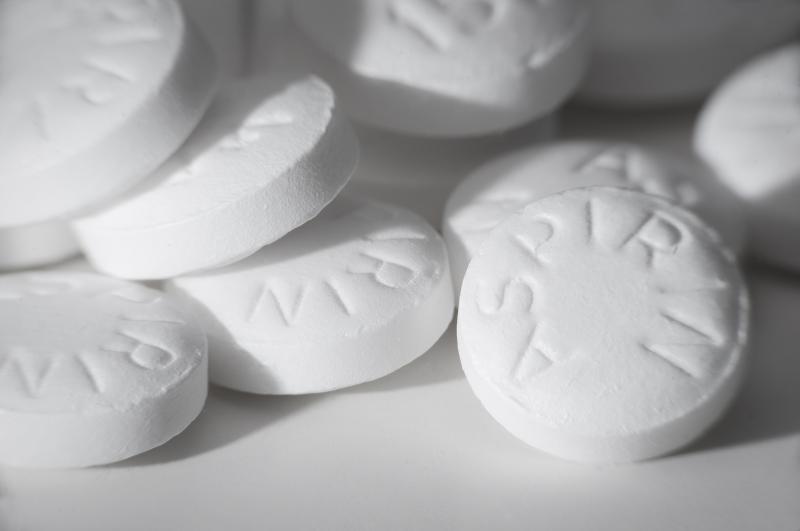
The use of aspirin for primary prevention in patients without known cardiovascular diseases (CVDs) significantly reduces the risk of myocardial infarction (MI) but increases that of major bleeding and haemorrhagic stroke, according to a meta-analysis.
“Furthermore, in contemporary practice, where statins and other measures are used aggressively for primary prevention, aspirin might not even decrease myocardial risk,” the researchers said. “Therefore … the routine use of aspirin for primary prevention may have a net harmful effect, as it will increase haemorrhagic complications without decreasing CVDs.”
Fourteen randomized controlled trials involving a total of 164,751 patients were included. Random-effects models were used to calculate risk ratios (RRs). The researchers conducted additional moderator analyses to compare the pooled treatment effects from recent trials—those reported after the release of the guidelines of the National Cholesterol Education Program Third Audit Treatment Panel in 2001—to the results of older ones.
Compared with placebo, aspirin lowered MI risk by 16 percent (RR, 0.84, 95 percent confidence interval [CI], 0.75–0.94). However, moderator analyses revealed no association between aspirin and a reduced MI risk in recent trials, but did so in older ones (p-interaction=0.02). [Am J Med 2019;132:1295-1304.e3]
Furthermore, aspirin use led to a marked increase in the occurrence of major bleeding (RR, 1.49, 95 percent CI, 1.32–1.69) and haemorrhagic stroke (RR, 1.25, 95 percent CI, 1.01–1.54). No significant difference was seen in the risks of major bleeding (p-interaction=0.12) and haemorrhagic stroke (p-interaction=0.44) associated with aspirin use between older and recent trials in moderator analyses.
The risks for all-cause stroke, cardiac death and all-cause mortality were not significantly different between aspirin and placebo.
“Current evidence of the net benefit of aspirin therapy for patients with established CVDs is robust,” the researchers said. “Thus, all guidelines recommend aspirin therapy for secondary prevention.” [Chest 2012;141(2 suppl):e637S-e668S; BMJ 2002;324:71-86; Lancet 2009;373:1849-1860; Fundam Clin Pharmacol 2010;24:385-391; Circulation 2011;124:2458-2473]
In primary prevention, however, a conflict exists between current evidence and guideline recommendations as regards the net benefit of aspirin, they noted.
The 2016 United States Preventive Services Task Force suggests the use of low-dose aspirin for the primary prevention of CVDs in adults aged 50–59 years who have a 10-percent of >10-year CV risk, are not at increased risk for bleeding, have a life expectancy of at least 10 years, and are willing to take low-dose aspirin daily for at least 10 years. [Ann Intern Med 2016;164:836–845]
The 2012 guidelines of the American College of Chest Physicians also recommend low-dose aspirin for the primary prevention of CVDs in patients aged >50 years. [Chest 2012;141(2 suppl):e637S-e668S]
In contrast, the 2016 European Society of Cardiology guidelines discourage the routine use of aspirin for primary prevention of CVDs, while the US Food and Drug Administration does not recommend aspirin use for the primary prevention of MI. [https://www.regulations.gov/document?D=FDA-1977-N-0018-0101; Eur Heart J. 2016;37(29):2315-2381]
“According to the 2019 American College of Cardiology/American Heart Association guidelines, use of aspirin for the primary prevention of CVDs in patients aged >70 years or at high risk of bleeding is harmful,” the researchers said. “Low-dose aspirin might be considered for the primary prevention of CVDs in select high-risk patients aged 40–70 years who are not at increased bleeding risk.” [J Am Coll Cardiol 2019;doi:10.1016/j.jacc.2019.03.009]